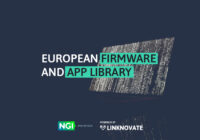NGI Pointer Project
Key people: Rick van Rein
Affiliation: InternetWide
The problem
Whenever you surf the Internet, sooner or later you land on a web asking you to log in. And for some time now, you can log in with a third party’s account, whether it is Google’s, Facebook’s, or any other massive player.
This action is quite convenient but – yes, there is always a but – has several consequences. First of all, you are including these companies in the loop, placing you and your rights in their hands – What would happen if Facebook changed its privacy policy regarding authentication in third-party webs?-. Secondly, you may come to forget your personal credentials because you lean on this type of log-in so often that you no longer use your specific credentials.
In other specific situations, authentication can become a barrier difficult to overcome, like managing and deleting passed one’s online profiles and data.
The bottom line here is that you should have control over your own identity, which is not being able to receive an email address, but being able to authenticate and represent who you are online.
Identity is being able to authenticate and represent who you are online.

And this is the mindset behind Rick van Rein and their colleagues’ project Realm Crossover at InternetWide. They aim to provide online freedom through self-control over online identity. In terms of user experience, this could be summarised as “Bring Your Own Identity”.
The user decides whether to use aliases, group identities and so on. Access control on services decides who may do what to which resources.
The user has one (or many!) identities under a domain of their own choice and uses their user@domain.name identity in all their online conduct.
They want the user to create, define and control their online identity.
Imagine the day when you enter your password in the morning and for the rest of the day you can surf the net and get services, products and access to every single web page that you visit based on that. Purchases, services, and relations with other websites without physically logging in. Single sign-on facilities as soon as you get on your desktop.

The project right now
In the run for getting a demo ready, they already proved that the technology works, and it’s easily integrated (relatively, says Rick cautiously). A demo that you could use, with extra depth if you are a technician when you can go deep into it playing around with it, like tapping network traffic, running your own servers, and so on.
The demo includes a set of containers as anyone would set up in a server park or the server machine so you can actually see the connections. It’s built specifically for the web because adding SASL to HTTP is also something that Rick’s team invented themselves.
The next step in development is standardization. First of all,
it’s already available in Firefox.
Although it still doesn’t have any other use case, they expect that when it starts to rock other browsers will also want to implement it. And then mobile phone APIs and the rest of it.
The expectations of use are high, especially within Europe, where InternetWide’s bet for identity sovereign is likely to be more welcomed letting the development unfold and reach all its potential.
Open source, a friendly resource
A bold project like InternetWide Realm Crossover needs as much help as possible, and that support is provided by the open-source community. As Rick says, it was clear from the beginning, InternetWide was an open-source project. It also allowed them to avoid the troubles associated with proprietary technology, not only budgetary but also related to interoperability and availability of the elements needed for the project, such as hardware and software. However, most of their developments are BSD licensed so they may also be used in proprietary
The team behind
There are 3 pieces in this project, and they agree that it’s the perfect number to tackle this challenge. On one side we have Rick, representing the architecture and vision. He’s the one with the big ideas, who reads protocols for breakfast.
Henri Manson is the audio guy, not fancy cameras. He is in charge of implementation and building. He makes sure Rick’s ideas integrate correctly.
And then there is Adriaan de Groot who is the support for getting everything running on almost every platform, no matter how weird it is.
“This team can extend HTTP with sample without breaking the idea of HTTP”, The NGI Pointer.
Why NGI Pointer, what does it provide?
For Rick and his team, NGI Pointer is not only a source of funds but also a validator and a supportive player for their ideas.
Rick hopes that NGI Pointer allows them to get to the right people and resources they need to expand their project and reach all its potential. The team is definitely open to collaborating with other people interested in the project, like the Internet Engineering Task Force, with whom they are already in contact.

“By supporting you, NGI says what you do matters, and that’s a big question”, Rick van Rein.
And that is more valid if we understand their tasks are way too big for the team.
Considering the applications of their development in administration, and the way it is aligned with the philosophy and policies deployed in the EU about privacy and data, for Rick there would be clear matchmaking with European authorities, except for the distance between technicians and politicians, two worlds that are most of the time disconnected.
But while they get closer, we recover a sentence addressed once to Rick when introducing InternetWide Realm Crossover:
“Authentication is too exciting. It should be solved well and then become another boring part of the Internet that magically works somewhere under the hood”, Rick van Rein.





